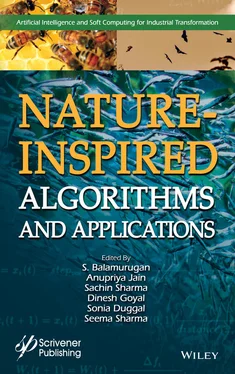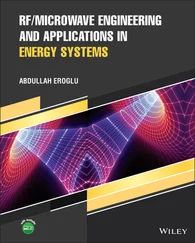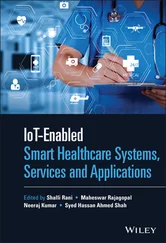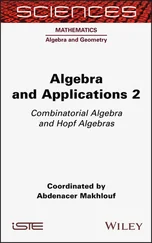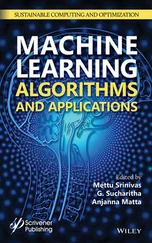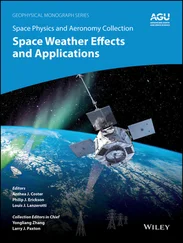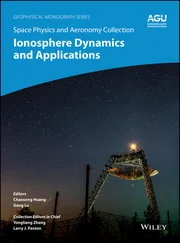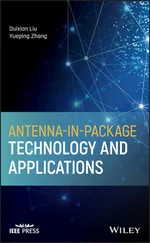1 Cover
2 Title page
3 Copyright
4 Preface
5 1 Introduction to Nature-Inspired Computing 1.1 Introduction 1.2 Aspiration From Nature 1.3 Working of Nature 1.4 Nature-Inspired Computing 1.5 General Stochastic Process of Nature-Inspired Computation References
6 2 Applications of Hybridized Algorithms and Novel Algorithms in the Field of Machine Learning 2.1 Introduction of Genetic Algorithm 2.2 Introduction to Artificial Bear Optimization (ABO) 2.3 Performance Evaluation 2.4 What is Next? References
7 3 Efficiency of Finding Best Solutions Through Ant Colony Optimization (ACO) Technique 3.1 Introduction 3.2 A Case Study on Surgical Treatment in Operation Room 3.3 Case Study on Waste Management System 3.4 Working Process of the System 3.5 Background Knowledge to be Considered for Estimation 3.6 Case Study on Traveling System 3.7 Future Trends and Conclusion References
8 4 A Hybrid Bat-Genetic Algorithm–Based Novel Optimal Wavelet Filter for Compression of Image Data 4.1 Introduction 4.2 Review of Related Works 4.3 Existing Technique for Secure Image Transmission 4.4 Proposed Design of Optimal Wavelet Coefficients for Image Compression 4.5 Results and Discussion 4.6 Conclusion References
9 5 A Swarm Robot for Harvesting a Paddy Field 5.1 Introduction 5.2 Second Case Study on Recommendation Systems 5.3 Third Case Study on Weight Lifting Robot 5.4 Background Knowledge of Harvesting Process 5.5 Future Trend and Conclusion References
10 6 Firefly Algorithm 6.1 Introduction 6.2 Firefly Algorithm 6.3 Applications of Firefly Algorithm 6.4 Why Firefly Algorithm is Efficient 6.5 Discussion and Conclusion References
11 7 The Comprehensive Review for Biobased FPA Algorithm 7.1 Introduction 7.2 Related Work to FPA 7.3 Limitations 7.4 Future Research 7.5 Conclusion References
12 8 Nature-Inspired Computation in Data Mining 8.1 Introduction 8.2 Classification of NIC 8.3 Evolutionary Computation 8.4 Biological Neural Network 8.5 Molecular Biology 8.6 Immune System 8.7 Applications of NIC in Data Mining 8.8 Conclusion References
13 9 Optimization Techniques for Removing Noise in Digital Medical Images 9.1 Introduction 9.2 Medical Imaging Techniques 9.3 Image Denoising 9.4 Optimization in Image Denoising 9.5 Results and Discussions 9.6 Conclusion and Future Scope References
14 10 Performance Analysis of Nature-Inspired Algorithms in Breast Cancer Diagnosis 10.1 Introduction 10.2 Related Works 10.3 Dataset: Wisconsin Breast Cancer Dataset (WBCD) 10.4 Ten-Fold Cross-Validation 10.5 Naive Bayesian Classifier 10.6 K-Means Clustering 10.7 Support Vector Machine (SVM) 10.8 Swarm Intelligence Algorithms 10.9 Evaluation Metrics 10.10 Results and Discussion 10.11 Conclusion References
15 11 Applications of Cuckoo Search Algorithm for Optimization Problems 11.1 Introduction 11.2 Related Works 11.3 Cuckoo Search Algorithm 11.4 Applications of Cuckoo Search 11.5 Conclusion and Future Work References
16 12 Mapping of Real-World Problems to Nature-Inspired Algorithm Using Goal-Based Classification and TRIZ 12.1 Introduction and Background 12.2 Motivations Behind NIA Exploration 12.3 Novel TRIZ + NIA Approach 12.4 Examples to Support the TRIZ + NIA Approach 12.5 A Solution of NP-H Using NIA 12.6 Conclusion References
17 Index
18 Also of Interest
19 End User License Agreement
1 Cover
2 Table of Contents
3 Title page
4 Copyright
5 Preface
6 Begin Reading
7 Index
8 Also of Interest
9 End User License Agreement
1 Chapter 1 Figure 1.1 Category of NIC.
2 Chapter 2 Figure 2.1 Genetic algorithm flow chart. Image source: Moustafa Alzantot [5]. Figure 2.2 Definition of gene, chromosome, and population. Image source: Vijini ... Figure 2.3 Crossover point. Image source: Patacchiola [11]. Figure 2.4 Development of offspring. Image source: Patacchiola [11]. Figure 2.5 Mutation. Image source: GeneHunter. Figure 2.6 Traveling salesman problem. Image source: Jessica Yu (2014)—Traveling... Figure 2.7 Blackjack—a casino game. Figure 2.8 Pong against AI—evolving agents. Image source: Pong using pixels—Andr... Figure 2.9 Snake AI—game. Image source: Greg Sharma (2018)—Via Siltherin. Figure 2.10 Genetic algorithm’s role in neural network. Image source: Suryansh [... Figure 2.11 Association rules generation. Image source: Berkani, L., Chebahi, Y.... Figure 2.12 Structure of a chromosome in GACD. Image source: Sanghamitra Bandyop...Figure 2.13 Grizzly bear.Figure 2.14 Bear’s nasal cavity. https://grizzlybearblog.wordpress.com/2010/11/1...Figure 2.15 Top view of a grizzly bear skull. https://in.pinterest.com/ericgreb/...Figure 2.16 ABO gist. https://www.ijser.org/researchpaper/Business-Intelligence-...Figure 2.17 Flow chart of overall proposed application.Figure 2.18 Artificial bear optimization: Pseudocode algorithm.Figure 2.19 Performance evaluation of ABO for banking customer profile and cance...
3 Chapter 3Figure 3.1 Global and local optima for f(x).Figure 3.2 Data flow of ACO approach.Figure 3.3 Work flow of surgical process.Figure 3.4 Hospital dataset.Figure 3.5 Waiting time and completion time.Figure 3.6 Components for scheduling.Figure 3.7 Dataset waste management.Figure 3.8 Routing systems for waste collection.Figure 3.9 Working flow of the system.Figure 3.10 Comparison of heuristic value with phenomenon value.Figure 3.11 Functional approach of swarm intelligence.Figure 3.12 Process flow.
4 Chapter 4Figure 4.1 Existing technique for secure image encoding.Figure 4.2 Block diagram of the proposed technique.Figure 4.3 DWT analysis and synthesis.Figure 4.4 Filter bank structure of the 2D DWT analysis.Figure 4.5 Filter bank structure of the 2D DWT synthesis.Figure 4.6 Image decomposition. Each sub-band has a natural orientation.Figure 4.7 QASK data frame.Figure 4.8 Input images.Figure 4.9 Magnitude Response of (a) KARELET low-pass decomposition filter, (b) ...Figure 4.10 Original image before decomposition and reconstruction.Figure 4.11 Simulation results.Figure 4.12 PSNR comparison for different wavelets for Barbara.Figure 4.13 MSE comparison for different wavelets for Barbara.Figure 4.14 LAD comparison for different wavelets for Barbara.Figure 4.15 L2 norm comparison for different wavelets for Barbara.Figure 4.16 SNR vs. BER plot while using Haar.Figure 4.17 SNR vs. BER plot while using Db4.Figure 4.18 SNR vs. BER plot while using Bior4.4.Figure 4.19 SNR vs. BER plot while using RBio4.4.Figure 4.20 SNR vs. BER plot while using Coiflet 4.Figure 4.21 SNR vs. BER plot while using Symlet 4.Figure 4.22 SNR vs. BER plot while using KARELET.Figure 4.23 PSNR vs. iteration curve (for proposed hybrid algorithm on train ima...
5 Chapter 5Figure 5.1 Process of dataset.Figure 5.2 Data frame of birds.Figure 5.3 Best move of birds.Figure 5.4 Performance measure of classification algorithm through trained data.Figure 5.5 Objects move vs. fitness evaluation.Figure 5.6 Data flow for decision process.Figure 5.7 Preprocessing output for future recommendation system.Figure 5.8 Stages of recommendation rate.Figure 5.9 Graph representation of PSO.Figure 5.10 Comparison on iterations and algorithms.Figure 5.11 Process of case study.Figure 5.12 Process flow of machine design.Figure 5.13 Flow of manufacturing and design process.Figure 5.14 Weight lifting data frame.Figure 5.15 Weight estimation—minimum likelihood.Figure 5.16 Weight estimation—maximum likelihood.Figure 5.17 Working principle of the model.Figure 5.18 Dataflow diagram.Figure 5.19 Design model for harvesting process.Figure 5.20 First phase—cutting the crops.Figure 5.21 Separation process.Figure 5.22 The grains and non-grains are cleaned.Figure 5.23 Process flow of entire estimation.Figure 5.24 Fitness evaluation of the established trained data.
Читать дальше
